Osteopathic Manipulation – Delray Beach, FL
A Hands-On Approach
to Healing
Balance is essential for a healthy body. When an injury throws off this balance, we can often restore it with a hands-on approach to healing called osteopathic manipulation. This non-invasive treatment has been verified to speed up recovery and deliver lasting relief from numerous musculoskeletal issues, giving patients the chance to return to their normal lives without having to get surgery or take medication. Our experts at the Institute for Non-Surgical Orthopedics provide osteopathic manipulation in Delray Beach, FL, and you can learn more by calling us today.
Why Choose the Institute for Non-Surgical Orthopedics
for Osteopathic Manipulation?
- Able to Relieve Pain in the Back, Head, Neck, Extremities, & More
- Treatments Tailor-Made for Each Patient
- Works with Your Body’s Natural Healing Abilities for Quick Results
Muscle Energy / Isometrics
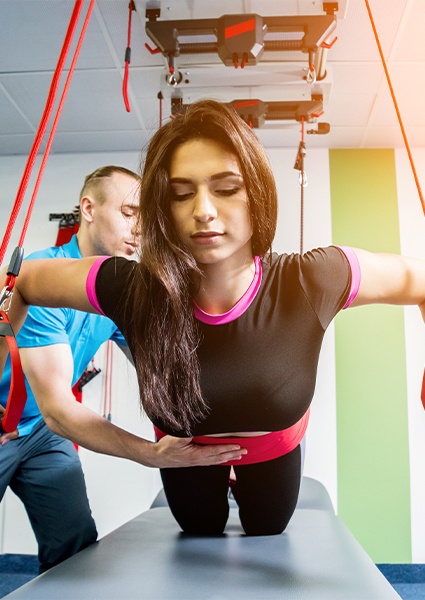
You may have heard the term “isometric” when discussing exercises that engage particular muscles without the person actively moving. Planking is a popular example of isometric exercise, and it’s a key component of several yoga poses. At our practice, we utilize it by having a patient lengthen or contract a muscle, and then – with their hands – the doctor gently applies resistance in the opposite direction. That way, the muscle is engaged, but not subject to discomfort since it’s not moving. Not only can isometric exercise alleviate pain, but it can also boost the range of motion by promoting blood flow to the area and helping tense tendons relax, preventing them from restricting movement.
Cranial Osteopathy
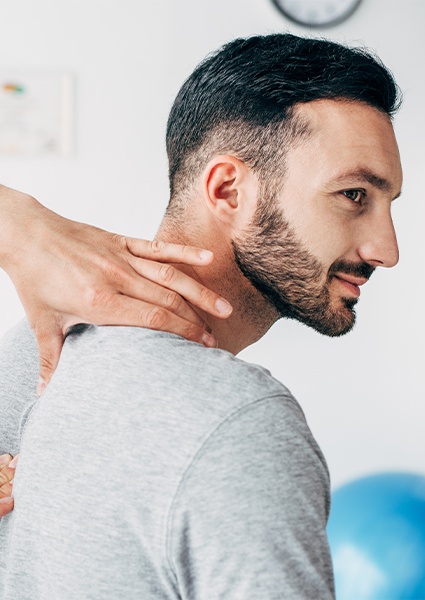
Cranial osteopathy is a delicate type of osteopathic treatment that focuses on the head. It requires a physician with a highly trained sense of touch who can detect subtle changes in the tension and overall quality of tissues throughout the entire body. The physician can then diagnose areas suffering from dysfunction or strain. From there, our team works to stimulate the body’s intrinsic ability to heal itself, offering gentle support in specific locations along the way to restore balance to the body.
Learn More About Cranial Osteopathy
Myofascial Release
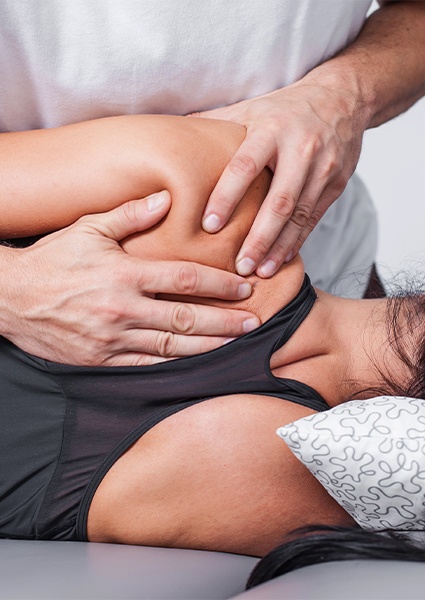
All throughout the body, there is a thin band of tissue just underneath the skin called the fascia, which supports the bones, muscles, and other bodily structures. The fascia is vulnerable to injury or strain just like muscles are. This can lead to the development of “trigger points” – small sites that, if touched, cause severe pain in a wider area. With myofascial release, our physicians can identify and eliminate this pain. In addition to helping patients feel better, myofascial release could also improve mobility since dysfunction in a section of the fascia can hinder muscle movement.
Learn MoreCounterstrain / Positional Release

Several of the body’s muscles function in pairs – when one extends, the other contracts, and vice versa. For example, when you curl your arm, your bicep tense as your triceps relaxes. The opposite occurs when you extend your arm. Therefore, we may be able to help injured or tense muscles relax by placing your body in certain positions in which you might not find yourself in your everyday life. In our office, our doctors will instruct you to hold a therapeutic position for a few minutes in order to achieve pain relief almost instantly. When regularly performed at home, positional release can potentially be a long-term solution for chronic pain.
Facilitated Positional Release
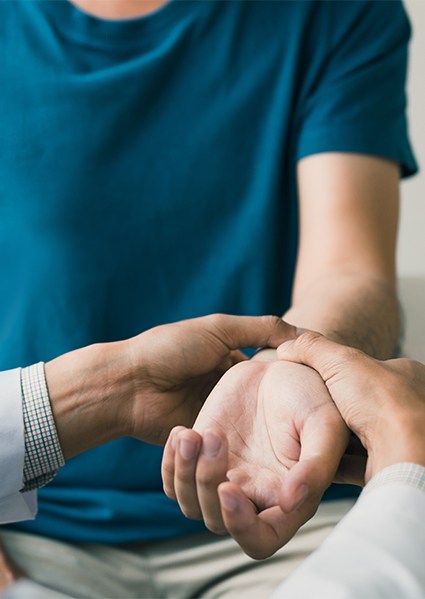
Facilitated positional release (FPR) involves the physician positioning the patient’s body in such a way that a strained muscle can easily relax. Then, that part of the body is gingerly moved, causing even more tension to be released. It can also help bring misaligned joints into the ideal orientation, relieving the discomfort that may have created. We typically recommend FPR for smaller muscles that might be more difficult to access with other methods of osteopathic manipulation.
High Velocity, Low Amplitude

The spine is made of a complex, delicate network of discs and vertebrae that protect nerves, as well as the muscles that support them. If even one tiny section of the spine becomes misaligned or injured, back or neck pain can occur. That’s where high velocity, low amplitude adjustments (HLVA) come in handy. Using their hands, the doctor quickly maneuvers the spine to bring it back into the proper alignment, which in turn decreases pain and stiffness. The manipulation itself is fast, leading to nearly immediate relief. While you may hear a popping noise during your session, you shouldn’t feel pain as no pressure is placed on the spine.
The Osteopathic Manipulation Process
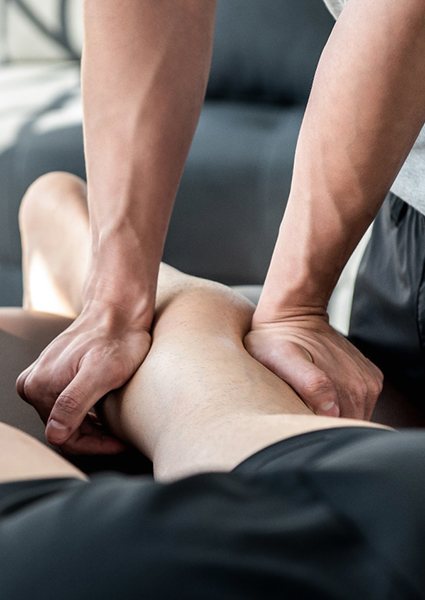
Getting osteopathic manipulation isn’t like booking a massage—you don’t just show up and immediately receive treatment! It’s a medical procedure, so certain steps need to be taken to ensure not only your safety, but its effectiveness as well so it will provide the best possible outcome. To learn a little more about what to expect, click the button below.
Before

Everything will start with a conversation between you and your doctor in which they will ask you about your symptoms, lifestyle, and other health concerns. They may also want to know more about your diet, sleep habits, and average level of daily stress. All of this helps them gather useful information so they can get a clear idea of what may be bothering you and know how your day-to-day experiences are influencing your well-being.
Then, they will perform a tactile exam in which they lightly touch or press different parts of your body. They may also take some diagnostic images (like X-rays) as well to help them better understand your condition. Depending on their findings and your goals, they’ll recommend appropriate treatments. If this includes osteopathic manipulation, they’ll move on to the next step (probably at a follow-up appointment).
During
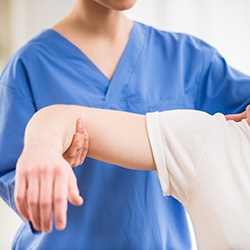
You will stand up, sit, or lie down on an exam table while your doctor uses their hands to manipulate your muscles, soft tissues, joints, and limbs. How they do this will vary from patient to patient depending on their needs. There are more than 40 osteopathic manipulation techniques, and only a few are detailed on this page.
Some techniques are slow, some are fast, and others involve continuous pressure in a certain area. While a certain technique may feel a little strange or awkward, you should never be in pain. If you feel any discomfort during a session, let your doctor know right away.
During a treatment, you may be asked to lay on your back, roll to your side, or pull your knees into your chest. Your doctor might have you follow a specific breathing pattern as well.
After
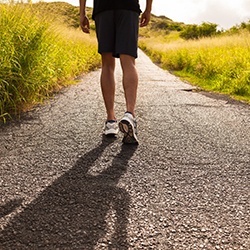
The immediate response to osteopathic manipulation can vary widely from person to person. Some people walk out of their appointment feeling relaxed and energized, while others are slightly sore and tired. This is all perfectly normal and indicates that the body is responding to some type of change, which is what you want!
To help your body adjust after osteopathic manipulation, we recommend that you drink plenty of water to stay hydrated (as your muscles may have been working in new ways that tired them out), go for a short walk so your body can find its new balance, and otherwise take it easy for the rest of the day and avoid rigorous physical activity.
Osteopathic Manipulation FAQs

Chances are that you may have never heard the term “osteopathic manipulation” before coming to this page, and that’s fine! If you are considering getting this type of treatment, you probably have questions, and our team is more than happy to answer them. Before you reach out to us, you’ll find our responses to some of the most popular ones below.
What conditions can be treated with osteopathic manipulation?
Over the years, our team has used osteopathic manipulation to successfully treat conditions stemming from many types of musculoskeletal injuries, including back pain, knee pain, neck pain, shoulder pain, ankle pain, and even headaches. It is also very effective for helping those who have been in a motor vehicle or sporting accident. When you come to see us, we’ll talk to you about your symptoms and perform an exam to determine if osteopathic manipulation would be a good option for you.
Does osteopathic manipulation feel like a massage or chiropractic adjustment?
While osteopathic manipulation, massage, and chiropractic care have a few basic things in common, they do not feel the same. Osteopathic manipulation employs many more techniques compared to the other two methods, plus its goals tend to be much more specific. While massage or a chiropractic adjustment might be used to “rebalance the body,” osteopathic manipulation has a more defined goal for each patient. It can be used to loosen a certain muscle, remove tension that is affecting a nerve, and improve blood flow to a specific area in order to promote better healing.
Can a masseuse or chiropractor perform osteopathic manipulation?
No. They do not have the training to do so. Osteopathic manipulation in Delray Beach can only be performed by a licensed DO, which means they have graduated from medical school and completed a residency program. Anyone other than a DO who is offering osteopathic manipulation should be avoided, as their lack of training may lead to a lack of results or even a worse injury in certain cases.
Is osteopathic manipulation covered by insurance?
Some medical insurance plans do offer coverage for osteopathic manipulation, but for only specific situations (like treating someone after a motor vehicle accident). The same can be said for government or state-sponsored health plans as well, like Medicare, and Worker’s Comp. Before committing to treatment with us, you should look over your policy, talk to your provider, or go over your plan with our team so you know what to expect when it comes to your out-of-pocket costs. If you need help paying for treatment, please let us know, and we’ll find a way to make it work for your budget.









